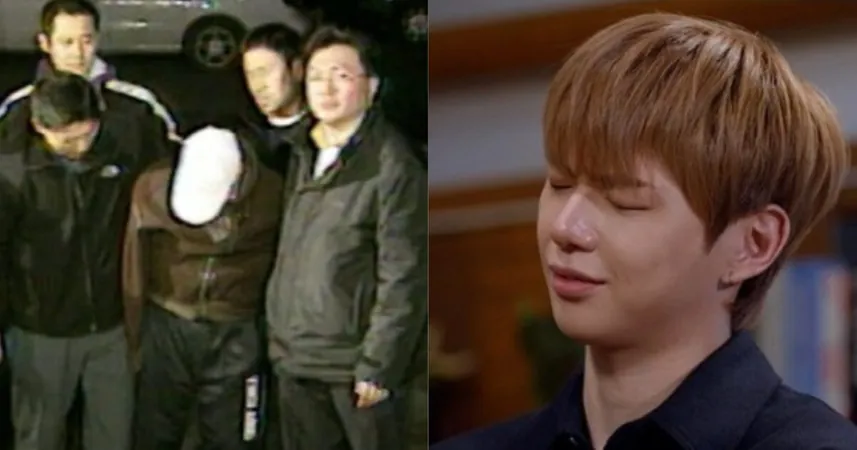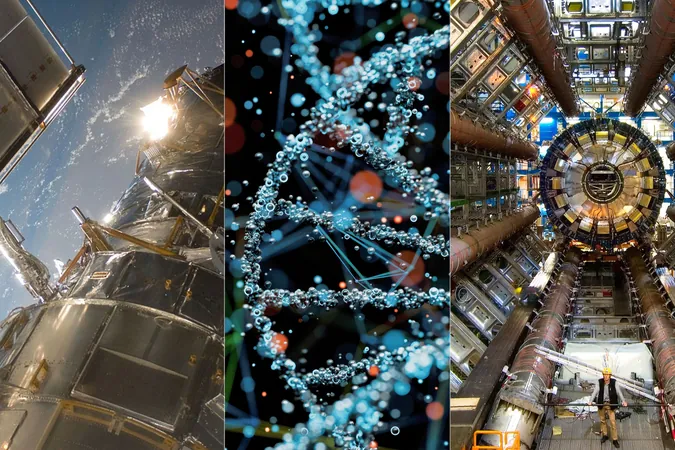
Unlocking the Secrets of Chirality: How Terahertz Pulses Transform Non-Chiral Crystals!
2025-01-23
Author: Yu
Introduction
Chirality is an intriguing concept in the world of science, referring to objects that cannot be superimposed onto their mirror images—similar to how our left and right hands differ. Chirality plays a significant role in various materials, especially in chiral crystals where the spatial arrangement of atoms grants them a unique “handedness,” influencing their optical and electrical properties.
Antiferro-Chirals: A New Class of Crystals
Recently, a research team from Hamburg and Oxford has turned their attention to antiferro-chirals, a fascinating class of non-chiral crystals reminiscent of antiferromagnetic materials. In these crystals, the arrangement of magnetic moments anti-aligns in a staggered pattern, which leads to a net magnetization of zero. Essentially, antiferro-chiral crystals consist of equal amounts of left- and right-handed substructures, rendering them overall non-chiral.
Terahertz Light and Non-Chirality
The groundbreaking research, led by Andrea Cavalleri from the Max-Planck-Institut for the Structure and Dynamics of Matter, has made headlines for employing terahertz light to break this symmetry in a non-chiral material known as boron phosphate (BPO4). This innovative approach induces a finite chirality in the material on an ultrafast time scale, a finding that could have far-reaching implications for future technologies.
Mechanism of Nonlinear Phononics
“By utilizing a mechanism called nonlinear phononics,” explained Zhiyang Zeng, the lead author of the study, “we can excite specific vibrational modes at terahertz frequencies. This process displaces the crystal lattice and enables the creation of a chiral state that lasts for several picoseconds.” This discovery paves the way for new possibilities in manipulating material properties using light.
Control and Implications
What’s even more fascinating is that by simply rotating the polarization of the terahertz light by 90 degrees, the researchers were able to selectively induce either a left- or right-handed chiral structure. Fellow author Michael Först elaborated, emphasizing the control they could exert over the chirality of the material, which opens doors to potential advancements in photonics and materials science.
Future Prospects
Published in the prestigious journal *Science*, the implications of this research could extend beyond basic science to practical applications in fields like quantum computing, telecommunications, and material development. As we continue to unravel the mysteries of chirality and its applications, this innovation stands as a testament to the power of harnessing light to control the fundamental properties of materials. Stay tuned for more updates on how this groundbreaking work will shape the future!


 Brasil (PT)
Brasil (PT)
 Canada (EN)
Canada (EN)
 Chile (ES)
Chile (ES)
 Česko (CS)
Česko (CS)
 대한민국 (KO)
대한민국 (KO)
 España (ES)
España (ES)
 France (FR)
France (FR)
 Hong Kong (EN)
Hong Kong (EN)
 Italia (IT)
Italia (IT)
 日本 (JA)
日本 (JA)
 Magyarország (HU)
Magyarország (HU)
 Norge (NO)
Norge (NO)
 Polska (PL)
Polska (PL)
 Schweiz (DE)
Schweiz (DE)
 Singapore (EN)
Singapore (EN)
 Sverige (SV)
Sverige (SV)
 Suomi (FI)
Suomi (FI)
 Türkiye (TR)
Türkiye (TR)
 الإمارات العربية المتحدة (AR)
الإمارات العربية المتحدة (AR)